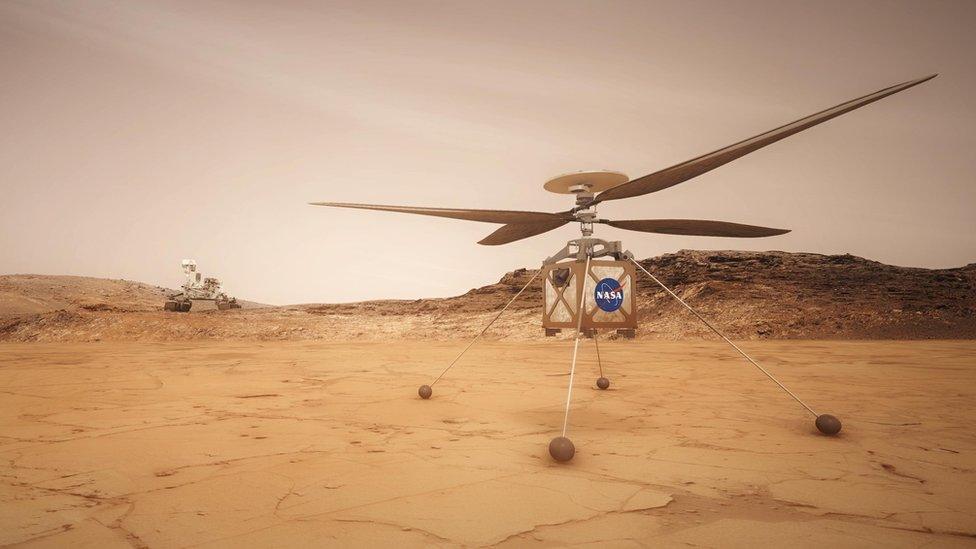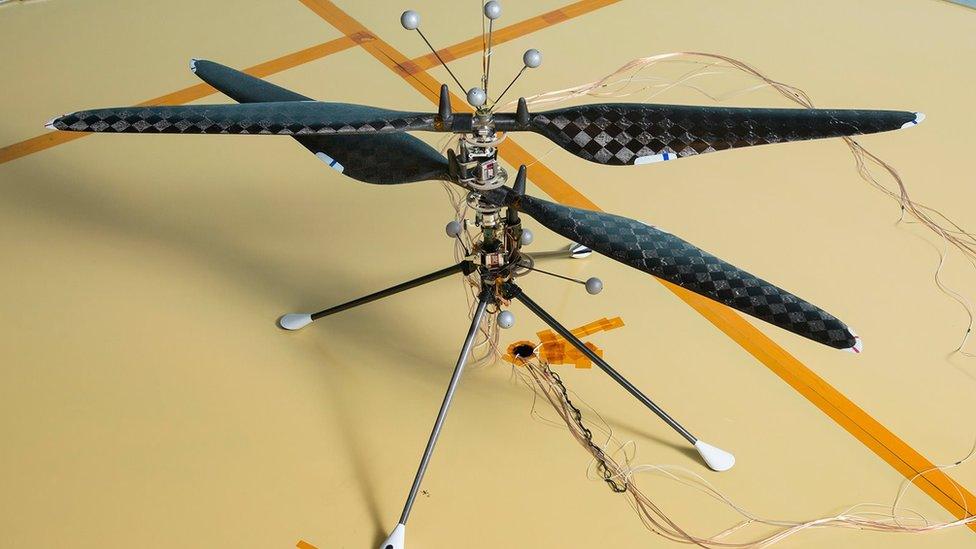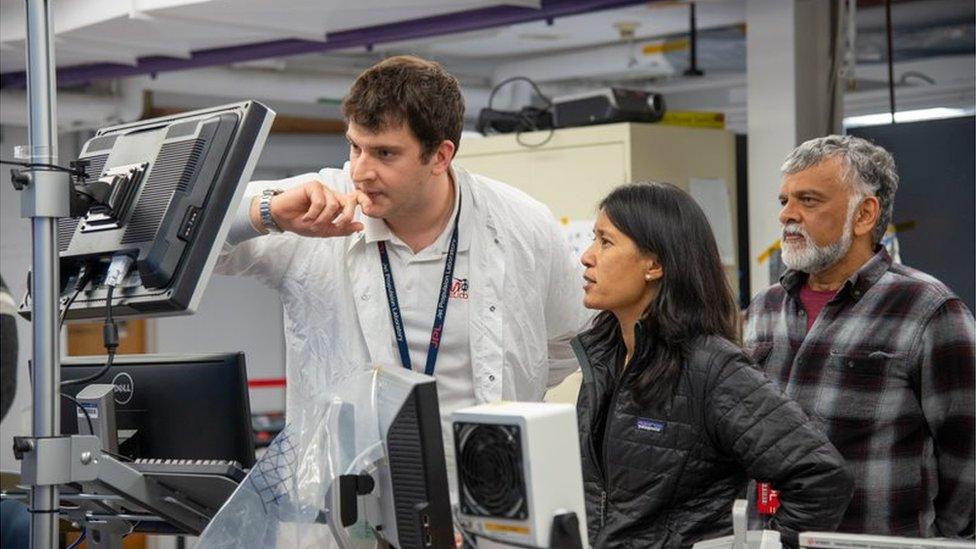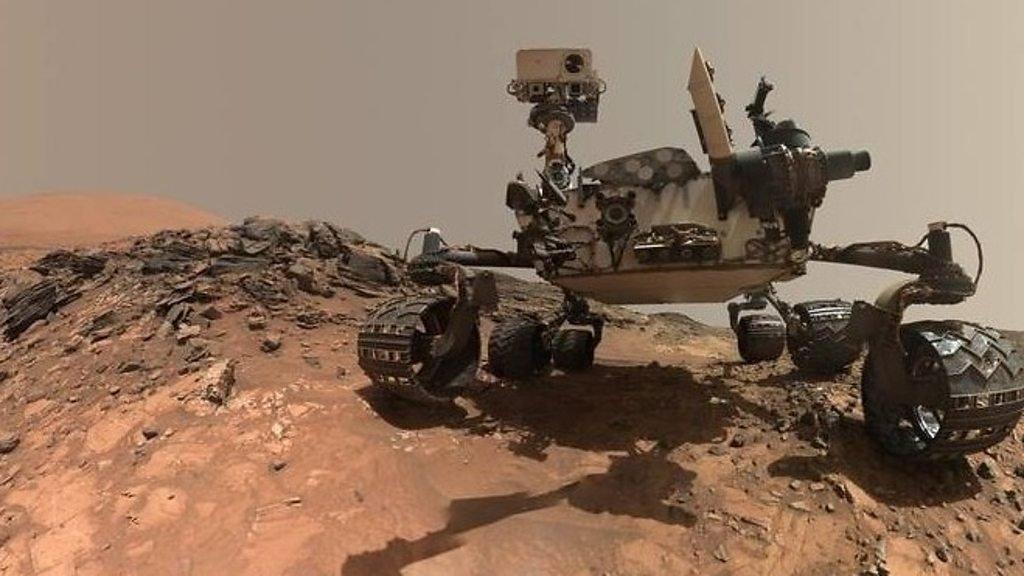Mars mission: Why Nasa is sending a helicopter to Mars in 2020
- Published
- comments

Last year Nasa announced plans to send a helicopter - or rather a Marscopter - to the Red Planet, and now it has had its first successful test flight.
Nasa has already sent several rovers to Mars, including Opportunity and InSight, to send back data on what life is like on the planet.
But their limited mobility means they often can only travel a limited distance from their original landing site.
To get a wider impression of what Mars is really like, Nasa want a fully-autonomous miniature test helicopter to travel with their Mars 2020 rover, set to launch in July 2020.

"The ability to see clearly what lies beyond the next hill is crucial for future explorers," said Thomas Zurbuchen from Nasa's Science Mission Directorate.
"We already have great views of Mars from the surface as well as from orbit. With the added dimension of a bird's-eye view from a 'Marscopter,' we can only imagine what future missions will achieve."
The light weight and rapid speed are essential for the aircraft to be able to fly in the thin Mars atmosphere, which is estimated to be just one percent of that of Earth.
It's quite small, and very light, weighing less than two kilograms.
It's fitted with two sets of rotor blades, which can spin at 3000 rotations a minute — about ten times the speed of helicopters on Earth.
"To make it fly at that low atmospheric density, we had to scrutinize everything, make it as light as possible while being as strong and as powerful as it can possibly be," said Mimi Aung, Mars helicopter project manager at Nasa.
It's hoped the Marscopter will be able to zoom high into the Martian skies, and show whether it's possible for flying vehicles to operate on the Red Planet.
Will the Marscopter really be able to fly on Mars?
Nasa has been busy testing out their prototypes, at Nasa's Jet Propulsion Laboratory in Pasadena, California.
To begin with they used a model, and then they started testing with the real Marscopter itself.

MiMi Aung, project manager for the Mars Helicopter said: "The 'copter weighs 1.8 kg and is built to withstand the ravages of Mars, where temperatures plummet to minus 90 degrees Celsius at night."
But how did the team prepare the 'copter to cope in the planet's very specific atmospheric conditions?
She added: "The Martian atmosphere is only about one percent the density of Earth's. Our test flights could have similar atmospheric density here on Earth - if you put your airfield 100,000 feet (30,480 meters) up. So you can't go somewhere and find that. You have to make it."

Teddy Tzanetos, MiMi Aung and Bob Balaram of NASA's Mars Helicopter project were all involved in the Mars-copter's flight test
They used a huge vacuum chamber called the Space Simulator to create similar conditions to Mars, sucking air out and adding in carbon dioxide, the main gas making up the Red Planet's atmosphere.
But Teddy Tzanetos, test conductor for the Mars helicopter, says that wasn't the only challenge.
"To truly simulate flying on Mars we have to take away two-thirds of Earth's gravity because Mars' gravity is that much weaker."
Nasa has a proud history of firsts. The idea of a helicopter flying through the sky on another planet is thrilling. The Mars Helicopter holds much promise for our future science, discovery, and exploration missions to Mars.
To do this the team created a 'gravity offload system', with a rope attached to the top of the helicopter pulling upwards to provide an "equivalent to two-thirds of Earth's gravity".
If all goes the plan, and the July 2020 launch goes ahead, it and the 2020 rover are due to land in February 2021.
- Published13 March 2019

- Published8 June 2018

- Published12 February 2018

